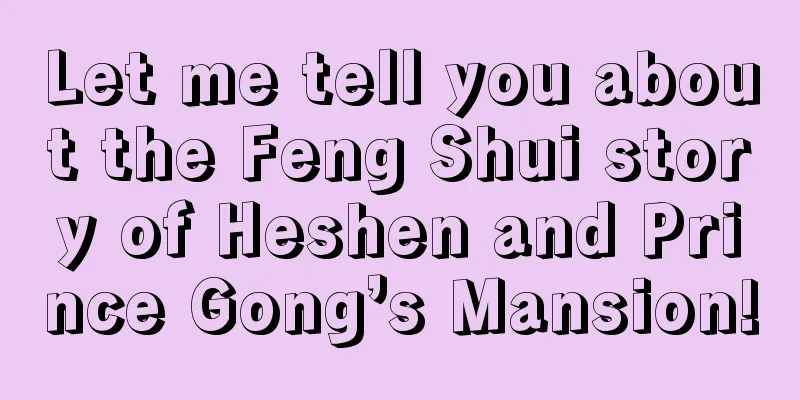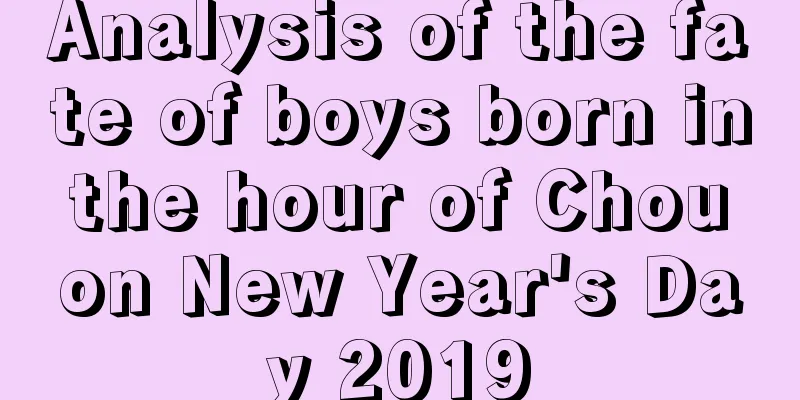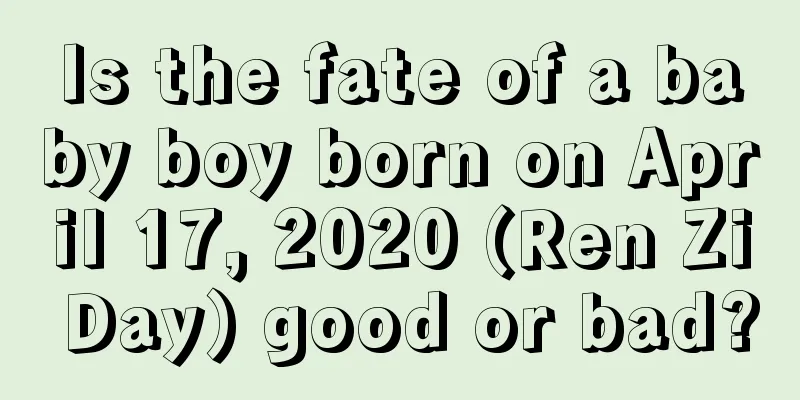Let me tell you about the Feng Shui story of Heshen and Prince Gong’s Mansion!

|
Introduction: When it comes to the name Heshen, it is truly a household name, and his resounding reputation as "the world's number one corrupt official" is also known to everyone. His Prince Gong Mansion is also famous far and wide. There is a legend that Heshen also understood Feng Shui, and the Prince Gong Mansion was permeated with many of Heshen's Feng Shui concepts. So, what Feng Shui stories are there about Prince Gong’s Mansion? Now, let’s follow the editor to take a look. It is difficult to tell the true from the false in folk Feng Shui stories. Let’s take a look at the following Feng Shui story. "A Prince Gong Mansion is like a textbook on Feng Shui." Especially the courtyard type of the large mansion with a narrow front and a wide back. In Feng Shui, there is a saying that "narrow in front and wide in the back means continuous wealth and prosperity." Prince Gong's Mansion is a standard "narrow in front and wide in the back" type. When Heshen chose this house, its geomantic energy was flourishing. Heshen was also an extremely intelligent man who understood Feng Shui, so he carefully planned and constructed both the macro environment and the micro environment within the house. He turned the house into a Feng Shui masterpiece and also pushed himself to the highest point of popularity and wealth. People have three kinds of luck: rising, prosperous and declining. But Heshen rose to power quickly and reached the peak of his power, so his decline also came quickly. Geographical location of Prince Gong's MansionIt is said that there are two dragon veins in Beijing. One is the earth dragon, which is the dragon vein of the Forbidden City; the other is the water dragon, which is the line between Houhai and Beihai. The Prince Gong Mansion is right on the connecting line between Houhai and Beihai, that is, on the dragon vein, so the feng shui is very good. my country's ten marshals, Guo Moruo and others all lived in the annex of Prince Gong's Mansion, and they all lived very long lives. It is said that the place with the most centenarians in Beijing is near Prince Gong's Mansion, which is a Feng Shui treasure land. Mao was well versed in feng shui, and he praised this place highly back then. The ancients regarded water as wealth. Water can be found everywhere in Prince Gong's Mansion. The water for the largest pavilion in the center of the lake is brought in from Yuquan Lake (only the emperor can drink the water there), and it does not flow out but only in, so it is more in line with the Feng Shui theory of making money. Feng Shui in other landscapes1. Stones in the Courtyard There are many strange stones in the courtyard of Prince Gong’s Mansion, and two of them are worth mentioning. One is a stone standing at the entrance, which is tall and slender, about two meters high, and its shape is a bit like a child. Heshen liked it very much and put it at the door of the house. On the one hand, it served as a screen to block the invasion of evil spirits and stop the outflow of wealth. It is also said that Heshen only had one son in his life, and all the rest were daughters, so he hoped for a son very much. This stone was shaped very much like a boy, so it was called the Son-Sending Stone, in the hope that it would bring him a son, many children and grandchildren, and prosperity to the family. Most of the other stones were transported from the south and have rather peculiar shapes. Workers would push the goods along the canal on the ice in the winter. If they couldn't finish pushing the goods in the first year, they would put them by the river and wait for the ice to freeze over the next year before continuing to push them. It took seven years to complete the construction of the palace. The ancients considered wealth to lie in having lots of stones. At that time, Prince Gong's Mansion had the most stones, even more than the Imperial Palace. What I admire most is the craftsmanship of the ancients. There was no cement at that time, so the ancients mixed glutinous rice and alum as an adhesive, and then piled the stones into various shapes. 2. Ten Thousand Bats Various kinds of bats can be seen everywhere in Prince Gong’s Mansion. The ancients were very superstitious and believed that "bat" (bat) and "blessing" (fu) have the same pronunciation and can bring good luck. Therefore, bonsai, flowers, stones, etc. in the courtyard were often stacked in the shape of bats. Heshen was very greedy for money and very superstitious. In Prince Gong's Mansion, various stone piles are shaped like bats, and there are bats everywhere on the doors, eaves, etc., some visible bats and some hidden bats, for a total of 9,999 bats. Add the character "Fu" (blessing) written by Emperor Kangxi, and there will be blessings throughout the courtyard! This shows how superstitious Heshen was. 3. Figures in Wutong Courtyard Inside the palace, there is a separate small courtyard, which is planted with tall Wutong trees. The shadows of the trees are swaying and very beautiful. When the wind blows, the leaves rustle, like the delicate cries of women and children, so it is called Wutong Courtyard. |
<<: What are the Feng Shui legends about peach wood warding off evil spirits?
>>: How to use Feng Shui knowledge to guard against villains in 2017?
Recommend
What should we pay attention to during the Great Heat? What to eat during the Great Heat?
Speaking of the Great Heat, I believe many parents...
Auspicious day for groundbreaking: Is it appropriate to break ground on Christmas Eve on the tenth day of the winter lunar month in 2020?
Introduction: It is also necessary to choose an au...
The position of the God of Wealth on the 15th day of the fourth lunar month in 2022, and the position of the God of Wealth today
What is the direction of the God of Wealth on the ...
What's missing from the five elements in the tenth month of the lunar calendar? What's the corresponding relationship between the five elements?
There is a one-to-one correspondence between the F...
Is the tenth day of the fourth lunar month in 2019, the year of the Pig, suitable for groundbreaking and renovation according to the almanac?
The fourth lunar month of 2019, the Year of the Pi...
Are there stars during the Mid-Autumn Festival in 2020? Is it a good idea to worship our ancestors during the Mid-Autumn Festival on August 15, 2020?
Introduction: Mid-Autumn Festival is the day of th...
Can I move on July 22, 2020, the day of the Great Heat? Climate characteristics of the Great Heat solar term
The Great Heat solar term falls during the "t...
Is the fifth day of the twelfth lunar month in 2018 a suitable day to set up a bed? What Feng Shui should be taken into consideration when setting up a bed?
Introduction: In our country's traditional cul...
Is it a good time to get a haircut on September 26th of the lunar calendar in 2020?
Is it a good time to get a haircut on September 26...
Can I get married on the tenth day of the twelfth lunar month in 2018?
The twelfth month of the lunar calendar is common...
Is it a good idea to pick up the car on March 25th of the lunar calendar in 2018?
An ancient poem says, "Fireworks are everywh...
Can we offer sacrifices to our ancestors on the 29th day of the second lunar month in the Year of the Rat 2020?
2020 is the Year of the Rat, and people born in th...
Is it a good idea to move into a new home on March 16th of the lunar calendar in 2018?
The third month of the lunar calendar is the last...
Can I build a house on the fifth day of the eleventh lunar month in 2019, the Year of the Pig? Is it a good day?
There are many considerations when building a hous...
Is it unlucky to move on October 6, the day before Double Ninth Festival in 2019? Is Double Ninth Festival on the lunar calendar?
Introduction: You must choose an auspicious day to...









